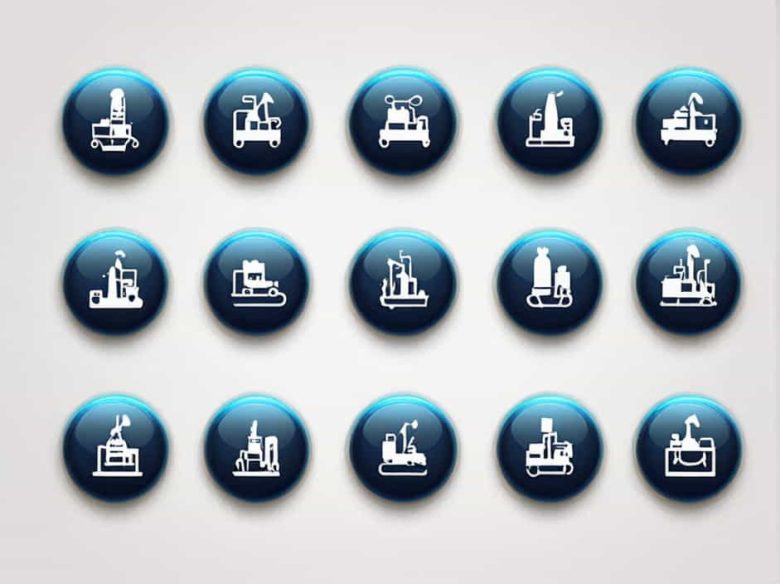The oil and gas industry is one of the most critical sectors in the global economy. It is divided into three main segments: upstream midstream and downstream. Each plays a unique role in extracting transporting and refining petroleum products used worldwide.
Understanding these segments is essential for anyone interested in the oil and gas supply chain whether for business investment or career opportunities. This topic explores the differences between upstream midstream and downstream operations their key functions and how they contribute to the global energy market.
What Is Upstream in Oil and Gas?
Definition and Role
The upstream sector refers to the exploration and production (E&P) of crude oil and natural gas. This stage involves finding underground oil and gas reservoirs drilling wells and extracting raw materials from beneath the Earth’s surface.
Key Activities in Upstream Operations
- Exploration – Geologists and geophysicists use advanced technology like seismic surveys to locate potential oil and gas fields.
- Drilling and Well Development – Once a viable site is identified drilling rigs are used to extract oil or gas from the reservoir.
- Production – Extracted oil and gas are brought to the surface separated from impurities and stored for transportation.
Companies Involved in Upstream
Major oil companies also known as supermajors such as ExxonMobil Chevron and BP are heavily involved in upstream activities. Independent exploration companies also specialize in finding and extracting crude oil and natural gas.
Challenges in the Upstream Sector
- High investment costs for exploration and drilling.
- Environmental concerns related to drilling and oil spills.
- Price fluctuations affecting profitability.
What Is Midstream in Oil and Gas?
Definition and Role
The midstream sector focuses on the transportation storage and wholesale distribution of crude oil and natural gas. It serves as the link between upstream production and downstream refining and distribution.
Key Activities in Midstream Operations
- Transportation – Crude oil and natural gas are transported via pipelines tankers railways or trucks to refineries and processing plants.
- Storage – Large storage facilities hold crude oil and refined products before distribution.
- Processing – Some midstream facilities process natural gas by removing impurities like water and sulfur before sending it to market.
Companies Involved in Midstream
Midstream companies specialize in pipeline operations logistics and infrastructure development. Some well-known midstream companies include Kinder Morgan Enbridge and TransCanada.
Challenges in the Midstream Sector
- Infrastructure maintenance and regulatory compliance.
- Political and environmental factors affecting pipeline approvals.
- Safety risks related to oil and gas transportation.
What Is Downstream in Oil and Gas?
Definition and Role
The downstream sector involves refining crude oil into usable products and distributing them to consumers. This includes gasoline diesel jet fuel lubricants and petrochemicals used in everyday products.
Key Activities in Downstream Operations
- Refining – Crude oil is processed in refineries to produce fuels and other by-products.
- Marketing and Distribution – Gas stations wholesalers and retailers sell refined petroleum products to consumers and industries.
- Petrochemical Production – Chemical plants manufacture plastics fertilizers and synthetic materials from petroleum-based components.
Companies Involved in Downstream
Refining and marketing companies like Shell Valero and Phillips 66 operate in the downstream sector. Many integrated oil companies participate in both upstream and downstream activities.
Challenges in the Downstream Sector
- Volatile fuel prices impacting refinery margins.
- High operational and maintenance costs.
- Environmental regulations on emissions and refining processes.
The Relationship Between Upstream Midstream and Downstream
These three sectors work together to ensure a steady supply of oil and gas products to consumers. The upstream sector finds and extracts crude oil the midstream sector transports and stores it and the downstream sector refines and distributes it.
The success of one segment affects the others. For example a decline in crude oil production (upstream) can lead to lower refinery output (downstream) and higher fuel prices for consumers. Similarly midstream bottlenecks can disrupt supply chains and affect global markets.
Why Is Understanding These Sectors Important?
- Investment Opportunities – Investors analyze different sectors for potential profits based on oil prices and market demand.
- Career Prospects – Professionals seeking jobs in oil and gas must understand where their skills fit in the supply chain.
- Energy Security – Governments and businesses rely on stable upstream midstream and downstream operations for energy security and economic stability.
The oil and gas industry operates through a well-defined supply chain: upstream midstream and downstream. Each sector plays a vital role in extracting transporting and refining crude oil into usable products.
Understanding how these segments interact helps businesses investors and energy professionals navigate the industry. With evolving technologies and increasing environmental concerns the oil and gas sector continues to adapt ensuring a stable and efficient energy supply for the future.



